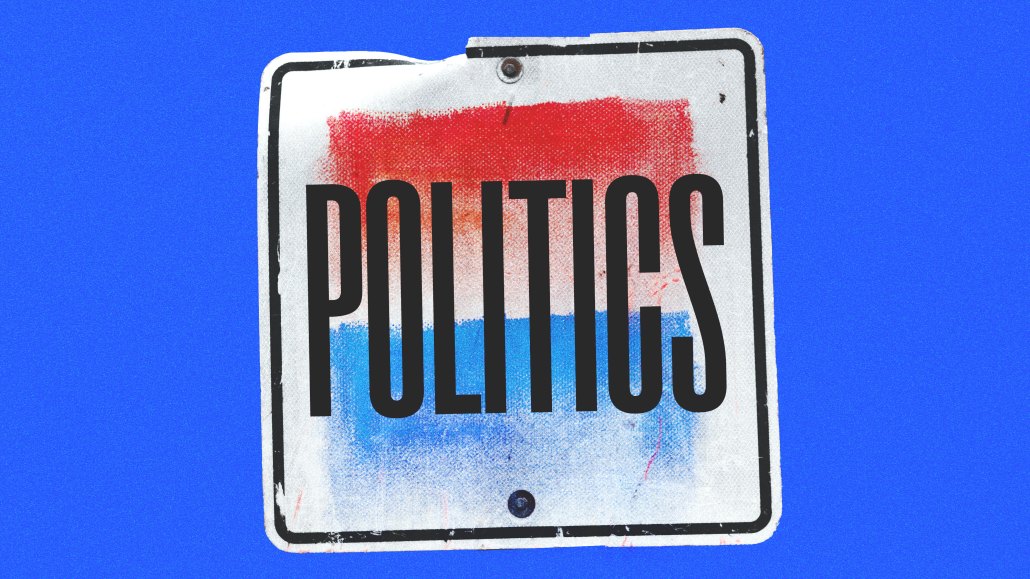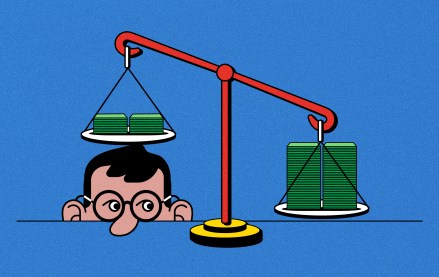Insights from CTV leaders at Dentsu, Horizon Media and more
As $12 billion 2024 political spending cycle nears, Stagwell partners with RealClearPolitics

As agencies prepare for record political spending in 2024, Stagwell is gearing up for the election with a new way to partner with publisher RealClearPolitics.
In September, three of its agencies – digital transformation agency Code and Theory, business agency Gale and B2B digital media agency Multiview – started developing a new advertising offering to help brands connect with the publisher.
RealClearPolitics is a non-partisan media site that is often cited in news outlets for its Polling Average and other electoral metrics. Through the partnership, the agencies want to reimagine the experience as a destination for the latest polling updates for a mobile-first audience.
“We could have hired a company to rethink its website [and] could have decided to build out its direct and programmatic media Salesforce in more traditional ways,” said Beth Sidhu, chief brand and communications officer at Stagwell. “This is a new way of thinking about how RCP can go to market in an interesting way, and we’re excited to be part of that.”
With the joint effort, Code and Theory will work on the interface and user experience. GALE and Multiview will focus on monetizing the new user experience through ad sales and direct brand partnerships, Sidhu explained.
Spending expectations
As for the spending, Stagwell agency Assembly recently projected a record $12 billion in political ad spending in the upcoming 2024 cycle. About $9 billion is expected in down-ballot races, concentrated in statewide races for Senate, House, governor and other local races. With that fierce competition coinciding with the presidential election, states including Nevada, Arizona and Pennsylvania will become key political ad spending battlegrounds.
“[The presidential election] is really the largest cultural tentpole event that we have,” said Dan Gardner, cofounder of Code and Theory. “It’s actually the super of Super Bowls.”
Indeed, next year is gearing up to become the most expensive election in the history of the U.S. Junelle Harnal, head of political for digital media firm My Code, said it’s safe to expect the highest digital and television spending four to six weeks before election day.
“There has been an increase in digital spending in the last two cycles, and we anticipate it to continue increasing this cycle, with the greatest growth in OTT/CTV,” Harnal said.
Another agency exec, that spoke on background, said political investment will be concentrated in video, audio and long-form content, including local TV, radio and other national campaigns. The agency also anticipates social media and display being important in the weeks leading up to candidate debates and voting dates. Some of that inventory will likely be purchased through programmatic.
Growing political engagement
New ways of engaging people in politics has transformed as more platforms and content become available. Gardner said there is increasing consumer interest and “thirst” for getting data, political updates and entertainment.
“There’s incredible engagement,” Gardner told Digiday. “I hate to say, [but with] news as entertainment, there has to be that element where we blend entertainment and informative together to actually deliver an experience that is very helpful and what users are looking for.”
With greater use of AI tools, political ads engagement can also get more dynamic and personalized. Mitchell West, director at ad intelligence company Vivvix CMAG, sees it as beneficial for quickly creating scripts for ads or churning out similar versions to be used in races across the country – but it is not without risks.
“The caution around AI is that it could be used in political ads to create false images or false statements that could be used to attack a candidate,” West added.
RealClearPolitics’ new polling experience will also include some new email content opportunities and custom and programmatic advertising units. This comes as Stagwell continues to develop specialty media solutions for brands and experimenting with new platforms, such as augmented reality experiences in sports and events. Code and Theory has worked on strategy and development with some 200 publishers, including BBC, CNN and Bustle Media.
“This is about the user experience and monetizing this Super Bowl of news junkie audiences,” Sidhu added.
More in Media Buying

When should an agency go the ESOP route, and what are the risks?
Boiled down to their essence, ESOPs are when an owner or founder sells their stake in an agency to the employees who all receive stock, most often held in a trust.

Media Buying Briefing: The upfront isn’t moving along for a few surprising reasons
The marketplace is being slowed down due to increasing complexity, and discrepancies with Nielsen’s latest ratings system.

As Integral Ad Science marks its fourth anniversary on the Nasdaq, speculation mounts over its future
Efforts are underway to take IAS private but there are varying levels of interest from private equity groups.








